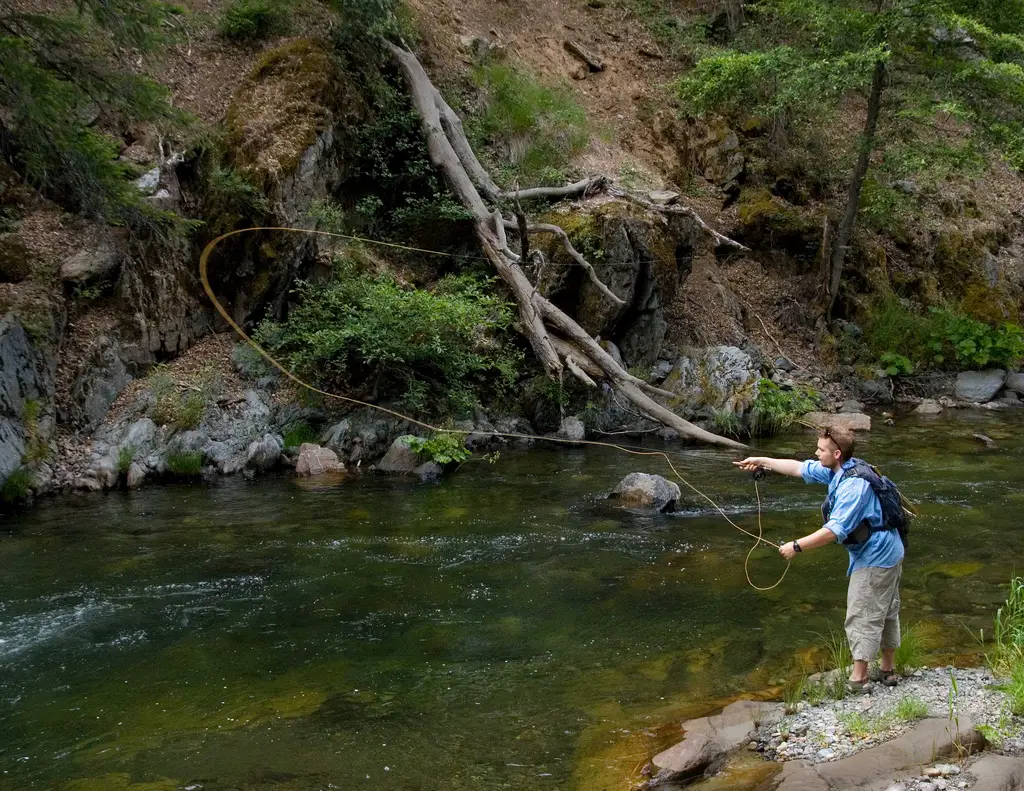The Basics of Fly Fishing Cast That You Can Benefit From Starting Today
 Not only will you find yourself fishing in private, but you’ll be casting to fish that see considerably less stress. These lines have a protracted important stomach with a front taper to the tip that's similar on every finish. Then, take the skinny end and make a big loop as if you are going to tie a knot.
Not only will you find yourself fishing in private, but you’ll be casting to fish that see considerably less stress. These lines have a protracted important stomach with a front taper to the tip that's similar on every finish. Then, take the skinny end and make a big loop as if you are going to tie a knot.
When confronted with a windy forecast, wishing upon a star that your buttery, flexy, lighter-weight rod is going to get you thru the day, is just inviting frustration. After unzipping our fishing bag, we will see the parts of the rod inside it. Today, they are used primarily for gentle-line, quick-vary dry fly fishing.
The varied parts of the pinnacle are then adjusted as required to create the desired impact. A short head length is used for quick, brief-range casts with minimal false casting. A protracted head size offers better accuracy, longer distance and higher line management. I’ve been trying to buy an extended rod, in the hope that I’ll be capable to solid out additional with it, and 12ft looks like a reasonable size.
Casts longer than 190 ft or 60 meters are very uncommon. The large stoneflies and mayflies from springtime are lengthy gone. Double Taper strains (Figure 1) are an older profile that continues to be in limited use as we speak. It is our accountability as anglers to use appropriately matched tackle with our targeted fish species to lower the duration time, due to this fact reducing the stress level of the fish.
The Ridge Polyfuse barrier gives it also a level of slickness that cuts down friction to a minimum. Lengthening the rear taper allows for a more accurate supply to the fish, while extending the entrance taper offers a more delicate presentation to spooky bonefish on shallow flats. In another software, lengthening the belly and extending the rear taper permits extra line to be carried on the back cast and provides a more accurate remaining presentation.
The profile or shape of the line has important influence on how the fly is carried and presented to the fish. Can you fish all 12 months round in NY? Items apart from fish can often be caught when fishing, reminiscent of Saddles, Name Tags, leather boots and Enchanted Books. You may either forged it in the shallows, or you can forged it further into the water.
The extended rear taper additionally makes mending simpler and offers more management to the road when on the water. The prolonged stomach on the double taper line enhances the stability of the road within the air permitting multiple false casts to be made to dry a fly and line up the forged.
Another aspect of double taper strains is with each ends being similar, the road will be reversed if the part in use wears out or is damaged. Another is to make use of a sinking or sinking-tip line. The part of the road that features all of these elements known as the pinnacle.
The mass of the pinnacle carries the fly and pulls the practically weightless running line together with it. A water haul in both case will allow you to cast far better distances with out making a number of false casts to extend line. Practicing on grass allows you to regulate your casting for different distances. This is the principle concept of casting.
We see two important elements, the head and the running line. The stomach is the principle part of the road the place a lot of the mass is situated. Say you've a a hundred feet fly line. Modern strains for bonefish have a unique mixture of features to help increase angler success.
We frequently see these options on strains specific to nymphing or for steelhead and Atlantic salmon. Finding the appropriate combine of these options to present maximum performance on the water is vital. A lengthened entrance taper to tip gives a delicate delivery of the fly on the water. Shortening the entrance taper will help turnover the chief and fly more efficiently.
There are strains made for general usage, that can cowl a wide range of situations. We all know that in fly casting we are throwing the load of the road and our lure, the fly, just goes along for the journey. The fly line “taper” refers to the overall form of the fly line.